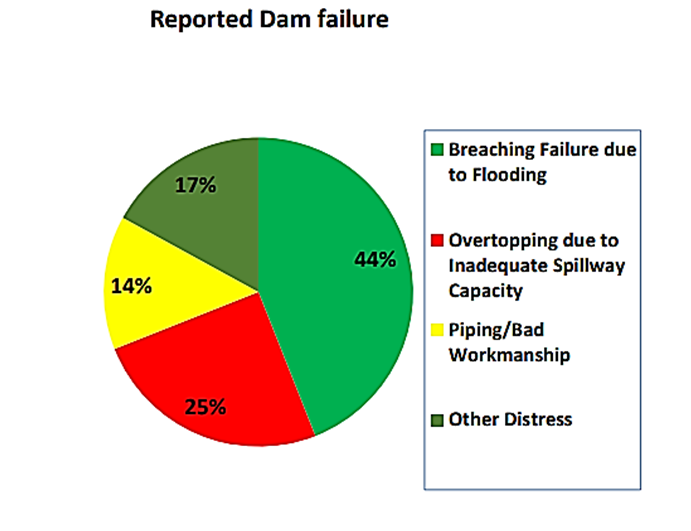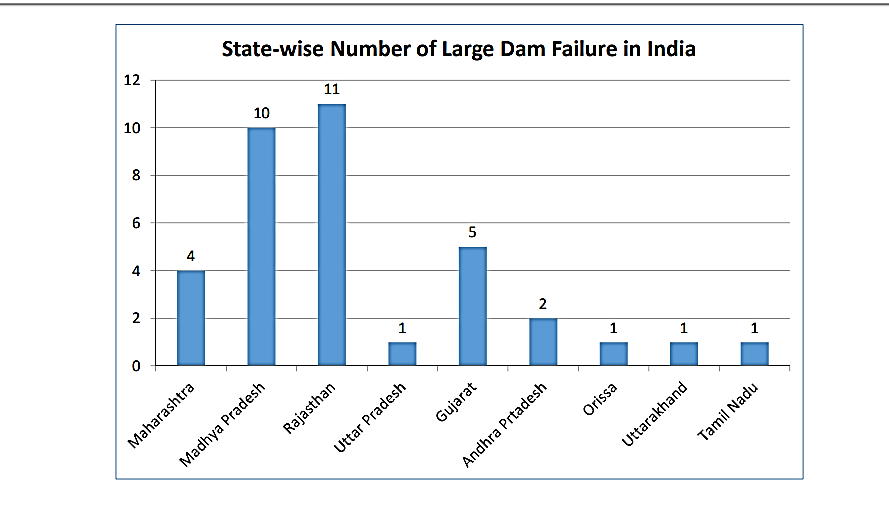Cabinet Clears The Dam Safety Bill, 2019
- 17 Jul 2019
- On 17th July, 2019, the Cabinet Committee on Economic Affairs (CCEA) approved the Dam Safety Bill, 2019 to be introduced in the Parliament.
- A version of the Bill was first introduced in the Lok Sabha in 2018(which subsequently lapsed).
Aim:
The Billaims to tackle all matters concerning dam safety including orderly inspection of dams, Emergency Action Plan, comprehensive dam safety review, sufficient repairs and maintenance funds for dam safety, instrumentation and safety Manuals.
Salient Features of the Bill:
|
Issues of Dam Safety in India:
- Dams Getting Older and Weaker: About 80% of the large dams in India are more than 25 years old and nearly 209 dams are older than over 100 years and had been built in an era when design practices and safety considerations were not up to the current design and safety norms.As the numbers of dams becoming older and older are increasing, the chances of dam failure in India arelikely to go up.
- Poor Quality Construction:Majority of Indian dams has failed immediately after construction or at the time of first full-load, which can be clearly attributed to factors of either inadequate design or poor quality of construction. Some 5,254 large dams are in operation in the country currently and another 447 are under construction which requires strict safety and maintenance procedures.
- Flaw in Design: Numerous dams have different structural deficiencies and shortcomings in operation and monitoring facilities, while few do not meet the present design standard-both structurally and hydrologically.Some of these dams may be facing distress and require attention for ensuring their structural safety and operational efficiency.
- Inadequate Fund Allocation:Most of the states have not been able to deliver sufficient budgets for maintenance and repair of the dam. Many states are also deficient o the institutional and technical capacities fordealing with dam safety issues.

Government Measures Towards Dam SafetyCentral Dam Safety Organization (CDSO):
National Committee on Dam Safety (NCDS):
Dam Rehabilitation and Improvement Project(DRIP):
Dam Health And Rehabilitation Monitoring Application (DHARMA):
|

Impact of the Bill:
- Adoption of Uniform Dam Safety Procedures: The legislation will help the states and Union territories to adopt uniform dam safety procedures for specified dams in the country. It will impact more than 5,600 dams which will now be under the ambit of Uniform Dam Safety Regulations.
- Safeguard Mechanism: It will also help in safeguarding human life, livestock and properties against unwelcomed dam’s disasters in India.
Final Word:
- Dams play a vital role in water security and foster rapid and sustained growth in agricultural, rural, urban and industrial development, which have been key priorities for the Govt. of India since independence.
- Citing the looming water crisis in India, the government should come out with strict dam safety and regulatory norms to ensure the better management of this critical infrastructure which is essentially required to store and manage limited surface water resources in reservoirs to ensure food, energy, and water security as well as to mitigate droughts and floods.




